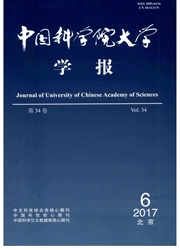
欢迎您!东篱公司
退出

 中文摘要:
中文摘要:
以绰墩遗址2个古土壤剖面(0~200cm)为对象,通过植硅体、有机碳、文化层、14C断代探讨稻作史及成因。结果表明,最大种稻强度在100~116cm(马家浜文化期),随后在75~100cm(马家浜-良渚文化期),种稻强度锐减。其原因并非土壤养分不足;6280aBP以后气候转为干冷,宜种稻的湿地演化为旱地,可能是主因。在160~100cm(马家浜文化期)、100~42cm(良渚-马桥文化期)、42~0cm(宋代-现代)存在间歇性连续稻作。
 英文摘要:
英文摘要:
Information of phytolith,SOC,cultural layers,and 14C dating in two ancient profiles(0-200cm) was used to probe the history and causes of rice cropping(RC).The results showed the highest rice cropping intensity(RCI) at 100-116cm(Majiabang) and the lowest at 75-100cm(Majiabang-Liangzhu).Nutrients deficiency was not the reason for drastic fall of RCI,but the land use change induced by climate change was.The continuous raise of RCI appeared at 160-100cm(Majiabang),100-42cm(Liangzhu-Maqiao),and 420cm(Song dynast...
 同期刊论文项目
同期刊论文项目
 同项目期刊论文
同项目期刊论文
 期刊信息
期刊信息
